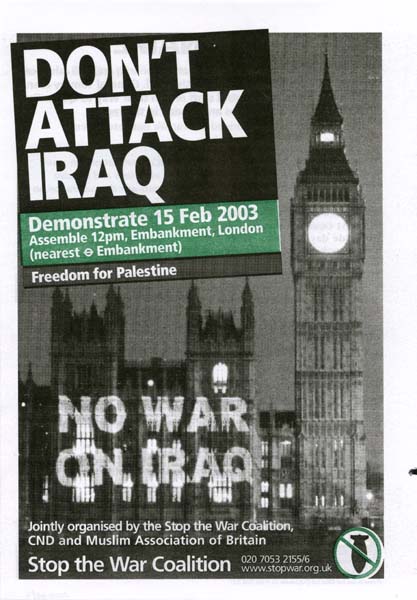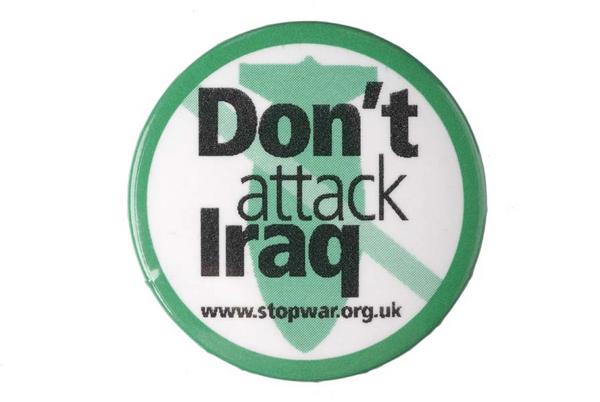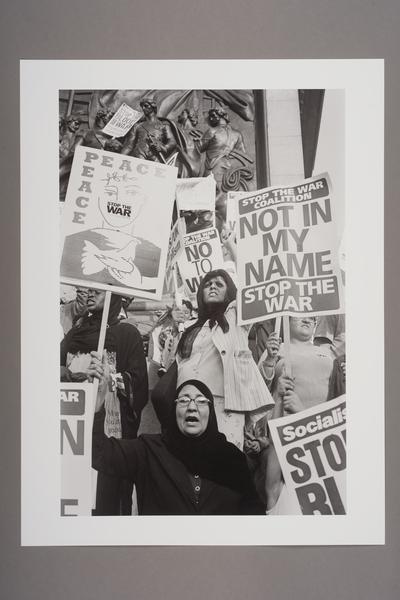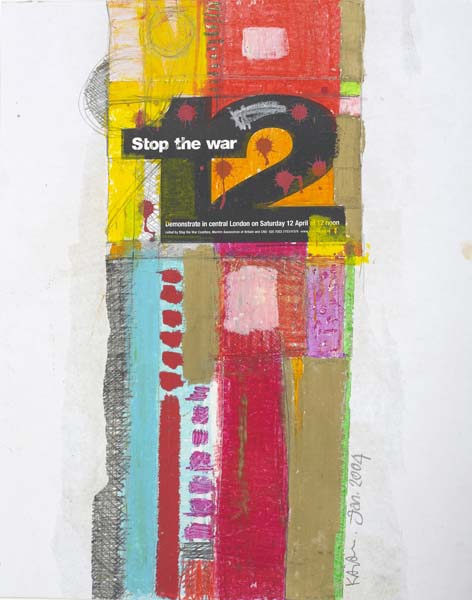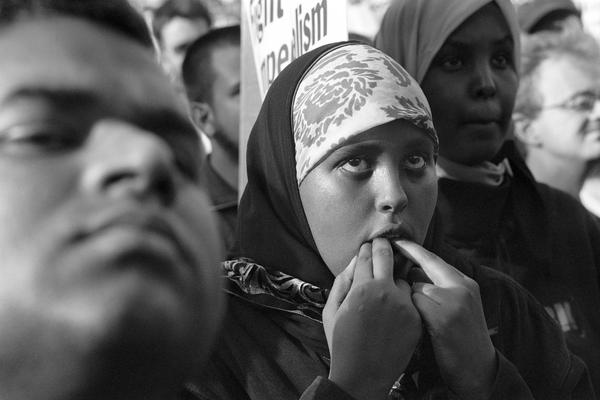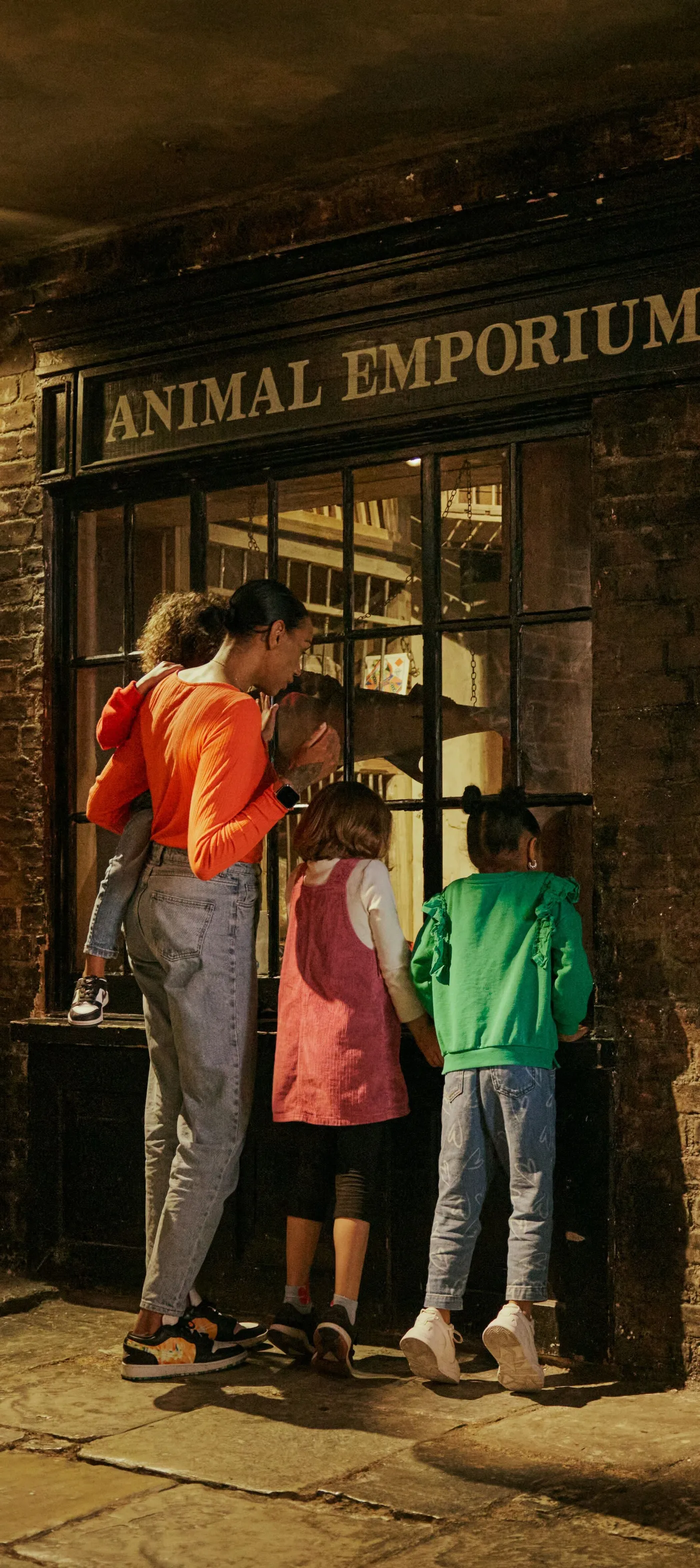Stop the War 2003: London’s largest ever protest
On 15 February 2003, between one and two million people marched in London against the Iraq War (2003–2011). It was the largest political demonstration in UK history.
Embankment to Hyde Park
15 February 2003

A million march for peace
The Stop the War demonstration in February 2003 brought together veteran anti-war activists and first-time protesters from across the country. Numbering over a million people, the crowds called for Britain not to follow America to war in Iraq.
Similar demonstrations around the world brought out millions for peace. But just a month later, the UK and the US invaded Iraq, leading to the deaths of hundreds of thousands of people.
Why did Britain go to war in Iraq in 2003?
In early 2003, the US president George W Bush was preparing to invade Iraq. He falsely claimed that the country’s president, Saddam Hussein, was developing weapons of mass destruction and supporting the militant Islamist organisation al-Qaeda. The UK prime minister Tony Blair was determined to stand “shoulder to shoulder” alongside the US in its so-called ‘war on terror’.
Other countries, like France and Germany, argued for patience and coordinated action overseen by the United Nations (UN).
The Iraq Inquiry later deemed the war unnecessary
Over a decade later, the Iraq Inquiry – also known as the Chilcot inquiry – published its report into the UK government’s decision to go to war.
Its 2016 report found that, at the time of the Iraq invasion, Saddam Hussein wasn't an urgent threat to the UK. The intelligence about weapons of mass destruction was made to seem more certain than it really was. Other peaceful options hadn't been fully explored, and the UK and US weakened the role of the UN by going ahead with the war. The legal reasons given for the war were unclear, and overall, the war wasn’t necessary.
Blair has rejected most of the report’s criticisms, but spoke of “sorrow, regret and apology” for the mistakes made in planning the war and its aftermath.

Signs, banners and placards at the march.
Who organised the protest?
The London march on 15 February 2003 was organised by the Stop the War Coalition, the Campaign for Nuclear Disarmament (CND) and the Muslim Association of Britain. Smaller protests had taken place in London in the months and years before.
On the same day as the London march, dozens of anti-war marches took place in cities around the world. A record three million people were estimated to have turned out in Rome.
How many people marched in London?
Between one and two million people marched in the capital. Even at the lowest estimate, this made it London’s largest ever political demonstration.
To put these numbers in perspective, the Suffragettes’ Women’s Sunday march in 1908 attracted a crowd of up to 300,000. A protest against Prime Minister Margaret Thatcher’s poll tax in 1990 drew 200,000. The Countryside Alliance’s 2002 march against a ban on hunting with dogs drew 400,000. And many hundreds of thousands marched in 2018 to call for a second Brexit referendum.
What happened at the march?
Protesters gathered at two sites: Embankment and Gower Street. The two groups met at Piccadilly Circus and marched to Hyde Park, where a stage had been set up.
Protesters carried placards, some reading “Make tea, not war”, “Not in my name” and “Drop Bush, not bombs”.
There were speeches from the London mayor Ken Livingstone and other politicians, including Tony Benn, George Galloway, Charles Kennedy, Mo Mowlam and Jeremy Corbyn. US political campaigner Jesse Jackson also appeared on stage, as did playwright Harold Pinter, activist Bianca Jagger and actors Tim Robbins and Vanessa Redgrave.
Who joined the protest?
Reports from the time describe protesters of every age group and background, who’d travelled from all over the country.
There were countless stories of people attending a political march for the first time.
What was the political reaction?
Blair reacted to the march on the same day, speaking in Glasgow: "I ask the marchers to understand this: I do not seek unpopularity as a badge of honour... But sometimes it is the price of leadership and the cost of conviction." He argued there could be “bloody consequences" for not challenging Saddam Hussein.
Did the march stop the war?
The march failed to stop the Iraq War. Many of those who took part have described feeling angry, let down and disillusioned that the politicians didn’t change course.
On 20 March 2003, American, British, Australian and Polish troops began their invasion. Hussein was toppled within a year. But only more bloodshed followed. Some Iraqis continued to fight against occupying forces. The invasion also triggered major sectarian violence among the country’s ethnic and political groups.
The conflict dragged on until 2011. Estimates put the number of Iraqi civilian deaths at well over 100,000. Across the invasion and occupation, 179 British and 4,492 US soldiers died.





